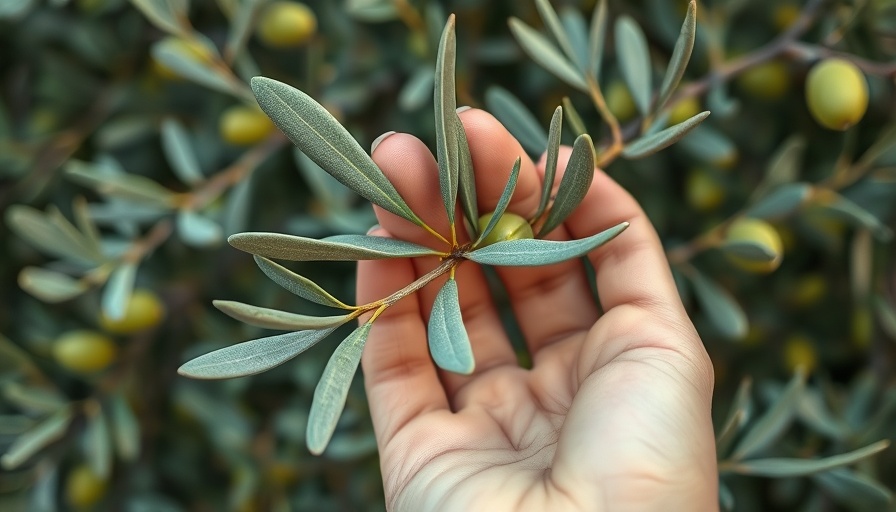
How Regenerative Agriculture is Reshaping California's Olive Oil Industry
In the heart of California's agricultural landscape, innovation is taking root among olive oil producers who are redefining their relationship with the land. The embodiment of this movement is typified by the practices at California Olive Ranch and Enzo Olive Oil, where the traditional methods of farming are giving way to regenerative agriculture. This approach not only aims to produce high-quality olives but also focuses on promoting soil health, biodiversity, and sustainability.
The Shift Towards Regenerative Practices
Historically, California's agricultural model has emphasized extraction and short-term yields. However, as droughts, heat waves, and erratic weather patterns increasingly challenge farmers, the necessity for a paradigm shift becomes clear. Producers are now looking to methods that bolster resilience in their groves against climate change. By adopting practices that nourish the earth, farmers are creating a legacy of sustainability rather than depletion.
A pivotal figure in this transition is Mary Mori, VP of Quality and Product at California Olive Ranch, who articulates their holistic approach. The use of winter cover crops, sheep for natural grazing, composted mulch, and precision irrigation systems are integral to their strategy. "These practices significantly improve soil moisture retention and build organic matter, enabling trees to better withstand the adversities posed by climate change," Mori explains.
Understanding Regenerative Certification
California Olive Ranch achieved a significant milestone by becoming the first organization in North America to receive formal regenerative certification from A Greener World for over 4,600 acres. This certification is particularly noteworthy as it allows them to apply its principles across both organic and non-organic fields, highlighting the adaptability of regenerative approaches. This flexibility is crucial for other growers who are contemplating transitioning their practices but may not be fully committed to organic farming yet.
According to Mori, "It's more about refining what works for us while aiming for continual improvement rather than adhering to strict organic standards from the start." This approach not only empowers growers to identify effective techniques but also encourages a culture of learning and adaptation.
Benefits of Cover Crops and Soil Health
One of the most significant advantages of integrating cover crops is their ability to enhance soil health and structure. Cover crops, like clover and rye, improve soil fertility, prevent erosion, and retain moisture—essential elements for cultivation under increasing climate stress. Moreover, as these cover crops grow, they suppress weeds and provide habitat for beneficial organisms, contributing to a balanced ecosystem.
Community and Collaboration
The regenerative agriculture movement is rapidly gaining traction among local communities. Producers are combining their knowledge and resources, forming networks to share insights about what has proven effective. Collaborations extend beyond immediate practices to include community education, where local consumers are informed about the significance of sustainable agriculture. This engagement fosters a communal spirit that honors the land and its resources.
Long-Term Impacts on Olive Oil Industry
As this shift towards regenerative agriculture progresses, it is expected to have lasting repercussions on the olive oil industry. By cultivating olives in an ecologically beneficial way, producers are not only enhancing their product quality but also contributing to broader environmental goals. This sustainable approach resonates with contemporary consumers who are increasingly inclined to support brands that prioritize ethical farming practices.
What's Next for California Farmers?
The road ahead for olive oil producers in California looks promising as they embrace sustainability. Innovative research into regenerative techniques continues to emerge, yielding insights that can inform broader practices within the agricultural community. By harnessing technology alongside traditional methods, these producers are ensuring their legacy in the face of an uncertain climate future.
As consumers become more conscious of the impacts of their purchasing choices, their support plays a crucial role in the growth of regenerative agriculture. By choosing products from producers committed to sustainability, consumers can directly contribute to a future where agriculture nurtures both the land and the people it supports.
In conclusion, the movement towards regenerative agriculture in California's olive oil industry showcases the potential for positive change. Through innovative practices, community collaborations, and a commitment to sustainability, producers are setting a standard for the agricultural sector, inspiring others to follow suit. Let us support these pioneering growers as they redefine the future of farming.
 Add Row
Add Row  Add
Add 



Write A Comment